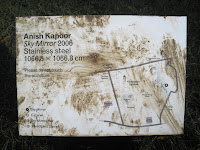The Barbican, an iconic landmark that splits the London skyline. The Barbican complex is made up of several different divisions. Depending how The Barbican has been brought to your knowledge will depend on how you will look at the cosmos that is integrated within.
However, with prior reading and multiple visits to The Barbican, you will first come across that it has its own underground station, this is situated on the Circle, Hammersmith & City and Metropolitan Lines. Upon arriving at The Barbican underground station you will notice three symmetrical towers that almost blog out the view of the sky, these make up The Barbican Estate. This being a residential estate that encompasses The Barbican Centre.
The Barbican Centre is a combination of arts, dance, education, film, conferences, trading exhibitions, music and theatre. These exhibition spaces are entwined in a multiplex space that if there were not filled with the intrigue of exhibitionist products that provoke and stimulate the minds to all that prospect to their excellence.
Places, projects, programs and pointers that will increase your knowledge in the duration of the course.
Sunday, 27 February 2011
New British Sculpture Movement
This is a movement of art that like every other in the world of art has its pioneers. This famous group started in the 1980's to exhibit together, they were a comprised of artists, sculptures and installation artists. Just a few names included in this movement are Tony Cragg, Richard Deacon and Richard Wentworth. Subjects that these pioneers would indulge in are pop and kitsch, UK environment and society, objects with meanings and colour, with and humour.
Anish Kapoor
Anish Kapoor, an Indian sculptor from Mumbai, India. Kapoor has lived and worked in the UK since the 70's. Kapoor first studied art at the Hornsey College of Art after which he moved to the Chelsea School of Arts and Design.
Kapoor's initial exhibits were viewed along with others as the New British Sculpture art scene (detailed information will follow). He followed this with international exhibitions in the Tate and Hayward Gallery, London. Also in other international houses such as Kunsthalle, Basel; Haus der Kunst, Munich; Deutsche Guggenheim, Berlin; Reina Sofia, Madrid; M.A.K., Vienna and the I.C.A., Boston.
Anish Kapoor's work.
Mainly using monochromes and bright colours, along side materials such as wax, powder pigment, quarried stone, metal. His thought process is to play with positives and negatives.
His most recent work was exhibited in Kensington Gardens, London using metal to bend, reflect and distort the viewer and the surroundings.
Below are several photographs that I captured for everyone to view and see Kapoors wizardry use of metal from Hyde Park.






Subscribe to:
Comments (Atom)




